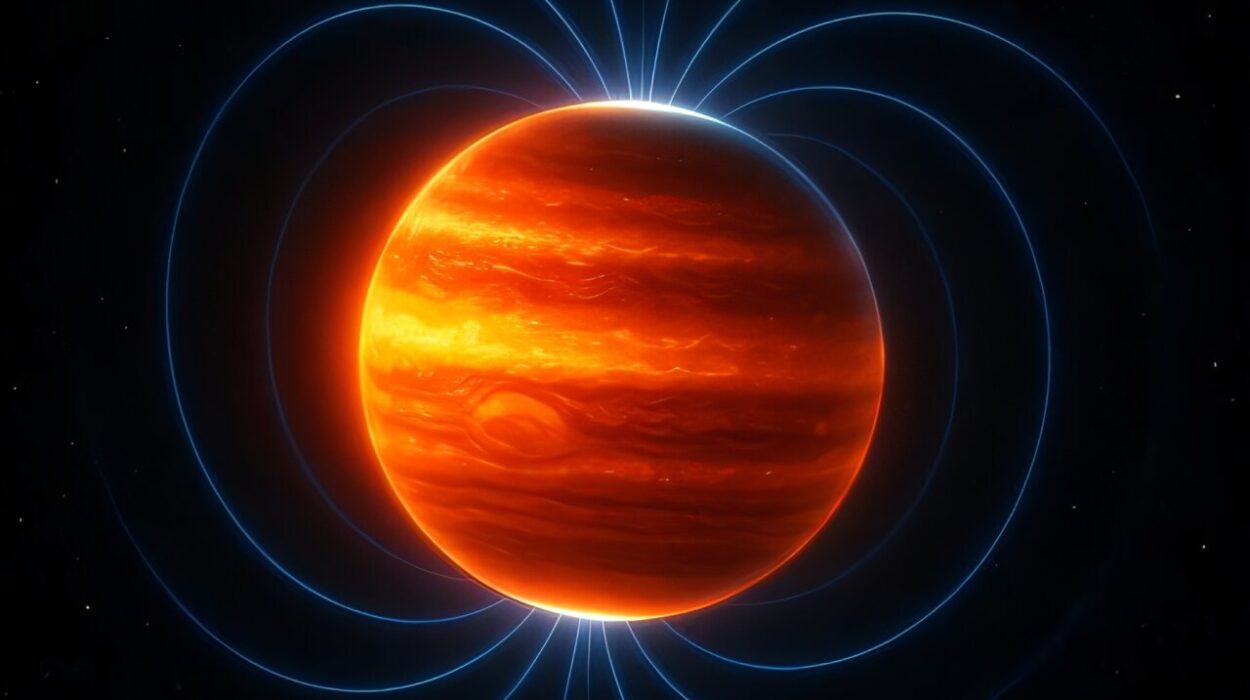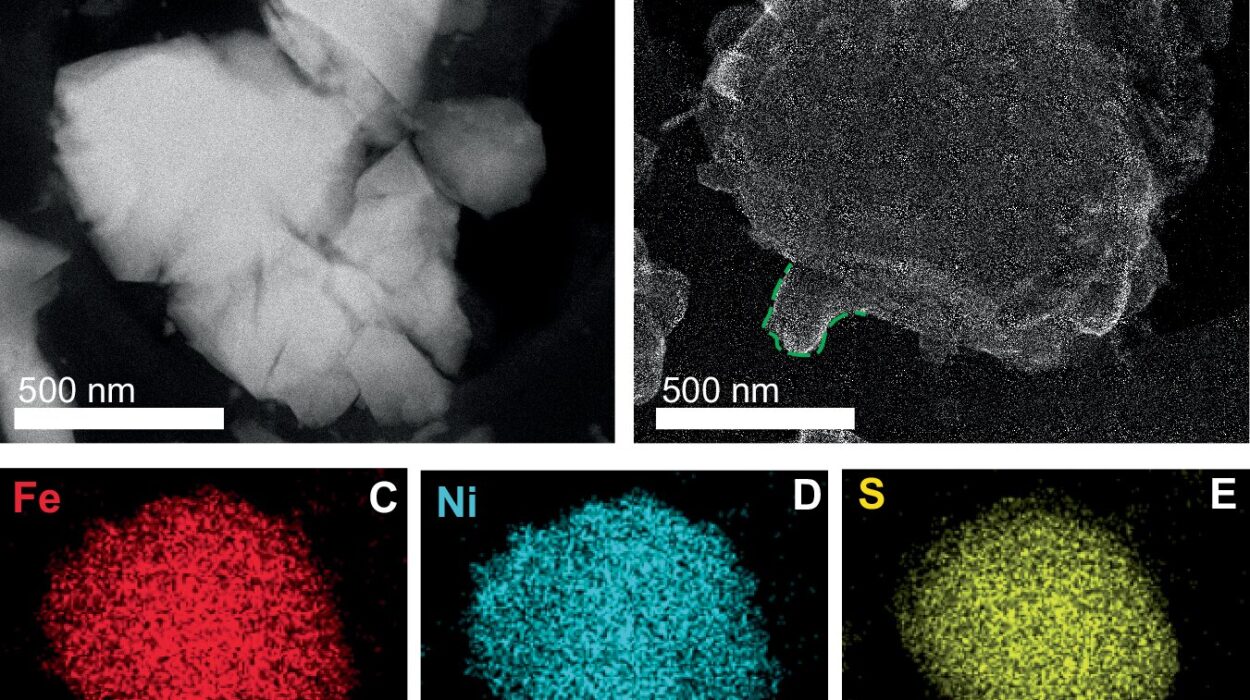Imagine Mars not as the dusty, desolate orb we know today, but as a world veined with rivers, marbled with oceans, and streaked with rain-slicked valleys. Three to four billion years ago, Mars might have looked startlingly familiar—blue skies, flowing water, and possibly the seeds of life beginning to stir. But today, all of that water is gone, or nearly so. The question that has haunted planetary scientists for decades is: where did it go?
A groundbreaking study from two graduate students at the University of Texas at Austin may finally give us a crucial missing piece in the Martian water cycle puzzle. Their answer doesn’t lie in the clouds or polar caps—it’s buried, deep beneath our feet. Or rather, beneath what would have been the feet of any would-be Martians.
Bridging the Gap: A Missing Link in the Martian Water Cycle
For years, scientists have known that Mars once had surface water—massive rivers, sprawling lakes, and perhaps even entire oceans. They also suspected, from orbiting radar and ground-penetrating measurements, that groundwater aquifers still exist beneath Mars’s crust. But what remained murky was the connection between the two: How, and how quickly, did water seep from the surface into the subsurface?
That question now has a compelling answer thanks to the work of Mohammad Afzal Shadab and Eric Hiatt, who, while graduate students at UT Austin, developed a high-resolution computer model to simulate how long it took for water to percolate from surface pools and rivers into underground aquifers in early Mars.
Their model produced a surprising result: water would have taken anywhere from 50 to 200 years to reach aquifers located about a mile (1.6 kilometers) below the surface. That might not seem fast, but in geological terms, it’s a blink of an eye. Especially when you compare it to Earth, where groundwater often lies just a few meters below the surface and infiltration can take mere days.
The Ghost Ocean Under the Crust
Even more stunning was the volume of water the model suggests could have made this journey into the Martian crust. According to Shadab and Hiatt, the amount of water that infiltrated underground would be enough to cover the entire planet in a layer 300 feet (roughly 90 meters) deep. That’s not a trickle—it’s a missing ocean.
Their findings, published in the journal Geophysical Research Letters, help reframe our understanding of Mars’s water history. Instead of a planet with an Earth-like cycling system—where water evaporates, rains down, and re-enters rivers and lakes—Mars may have had a vastly more one-sided water cycle. On early Mars, once water went down, it never came back up.
“This infiltration represents a major loss pathway,” said Shadab, now a postdoctoral researcher at Princeton University. “This was not water being lost to space, or evaporated—it was being swallowed by the crust. And it stayed there.”
A Martian Climate Unlike Earth’s
The implications of this study reach beyond fluid dynamics. If water was disappearing underground at such a rate, then the entire climate narrative of early Mars may need revision.
Hiatt, co-author of the study and a recent doctoral graduate from UT’s Jackson School of Geosciences, put it plainly: “The way I think about early Mars is that any surface water you had—any oceans or large standing lakes—was very ephemeral. Once water got into the ground on Mars, it was as good as gone.”
In essence, Mars may have lacked the continuous, sustainable water cycling system that helped make Earth a cradle for life. There might have been oceans and rivers, yes, but they were short-lived. Unlike Earth’s vast recycling mechanism, where water constantly returns to the sky via evaporation and precipitation, Mars appears to have soaked up its liquid treasure and locked it away.
Evaporation, Erosion, and Entombment
Why didn’t water return to the surface on Mars? The answer lies in the red planet’s tenuous atmosphere.
Billions of years ago, Mars is believed to have had a much thicker atmosphere than it does today. But without a strong magnetic field—unlike Earth’s geomagnetic shield—solar winds slowly stripped it away. With a thinning atmosphere, the pressure on the surface dropped, making it increasingly difficult for water to remain in a liquid state. What little water did remain on the surface either evaporated and escaped into space or froze.
As a result, the only “safe place” for water was underground. There, protected from the hostile surface environment, water could remain stable for eons, possibly still sitting in aquifers beneath the crust.
Shadab and Hiatt’s model fills in the vital transition stage. It’s the bridge between what we see etched into Mars’s surface—ancient deltas, shorelines, and lakebeds—and the tantalizing hints of subsurface ice and brine picked up by landers and radar. And it suggests that once water began percolating underground, Mars crossed a climatic Rubicon. It wasn’t coming back.
Life Finds a Way—or Does It?
If Mars once had vast underground reservoirs, could life have taken refuge there?
This is where the story gets complicated—and interesting. Life as we know it requires water, but not just any water. It must be present long enough, in stable conditions, to allow complex chemistry to unfold. On Earth, life is astonishingly adaptable, with microbes surviving in deep crustal rocks, in toxic brines, and in Antarctic permafrost.
If similar niches existed on Mars, then perhaps life had a chance. The finding that water infiltrated the Martian crust quickly—and likely remained there—offers a double-edged sword. On the one hand, water wasn’t lost to space; it was preserved. On the other, the surface became dry and barren very early on, cutting short the potential for surface-based biospheres.
Still, for astrobiologists, this is far from discouraging. If anything, it focuses the search. Future missions might target buried aquifers or ancient seepage zones, where liquid water once collected and perhaps fostered microbial life.
Implications for Human Exploration
This research doesn’t just inform the past—it may help shape the future.
If Mars’s subsurface still harbors frozen or briny water, it could be a lifeline for future human explorers. Transporting water from Earth to Mars is prohibitively expensive. A sustainable settlement would require local water sources—for drinking, agriculture, and even making rocket fuel.
Knowing where and how water moved into the Martian crust could help mission planners identify sites where water is most likely to be recoverable.
Hiatt emphasized this practical benefit: “If nothing else, the water seeping into the crust wasn’t being lost to space. It’s still there, and that’s good news for anyone looking to use Martian resources.”
A Collaborative Triumph
This study is also a powerful example of how young researchers can shake up our understanding of planetary science. Shadab and Hiatt conducted the research while completing their doctoral work—Shadab at UT Austin’s Oden Institute for Computational Engineering and Sciences, and Hiatt at the Jackson School of Geosciences.
They were joined by an international team of collaborators, including Rickbir Bahia and Eleni Bohacek from the European Space Agency (now affiliated with the UK Space Agency), Vilmos Steinmann from Eötvös Loránd University in Hungary, and Marc Hesse, a professor of geosciences at UT Austin.
It’s a testament to the increasingly interdisciplinary and global nature of planetary research, where computing, geology, physics, and environmental modeling come together to tackle some of the biggest questions in science.
Toward a Complete Martian Water Model
The next step, according to Shadab, is to integrate this infiltration model into a comprehensive simulation that tracks how Martian landscapes and water bodies co-evolved over millions of years. That would include erosion, sediment transport, lake formation, and the eventual disappearance of water from the surface.
“We want to implement this into an integrated model of how the water and land evolved together,” he said. “That will bring us very close to answering what happened to the water on Mars.”
Such a model would help test competing theories of Martian climate, explore potential habitats for life, and support the planning of robotic and human missions. It’s an ambitious goal—but one that’s increasingly within reach.
The Red Planet’s Silent Reservoirs
In the end, what’s most haunting about this study is its portrait of a planet that lost its surface water not in a cataclysm, but in a long, quiet descent into desiccation. Water slipped silently into the crust, unreturned, unrecycled. The rain stopped falling. The rivers ran dry. And the surface was left to the wind and dust.
But the memory of water remains—in the channels carved into rock, in the salty minerals left behind, and now, in models that peer deep below the surface. Mars’s water is not gone. It’s just hidden.
And perhaps, so too, is the answer to the most profound question of all: Were we ever alone?
Reference: Mohammad Afzal Shadab et al, Infiltration Dynamics on Early Mars: Geomorphic, Climatic, and Water Storage Implications, Geophysical Research Letters (2025). DOI: 10.1029/2024GL111939






